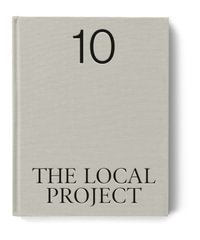
At a Glance
1008 Pages
27.94 x 22.86 x 4.45
Hardcover
$404.25
or 4 interest-free payments of $101.06 with
orAims to ship in 10 to 15 business days
NOTE: Before purchasing, check with your instructor to ensure you select the correct ISBN. Several versions of Pearson's MyLab & Mastering products exist for each title, and registrations are not transferable. To register for and use Pearson's MyLab & Mastering products, you may also need a Course ID, which your instructor will provide.
Used books, rentals, and purchases made outside of Pearson
If purchasing or renting from companies other than Pearson, the access codes for Pearson's MyLab & Mastering products may not be included, may be incorrect, or may be previously redeemed. Check with the seller before completing your purchase.
This inclusive text unites the key elements of residential construction, includes clear, concise, highly illustrated discussions and building plans, and excerpts from the 2015 International Residential Code for One- and Two-Family Dwellings from the International Code Council.
Written in simple terms with an emphasis on discipline nomenclature, professionalism, and articulation of content, Carpentry is among the first texts to integrate a full set of building plans with 2015 International Code Council building standards, and the latest carpentry text built around the ideals of modern and sustainable construction methods. Fully conceived, designed, and written to help develop the first generation of carpenters and builders of tomorrow's highly efficient green homes, the book is based on building science and the latest materials and techniques. The mathematics, theory, practice, techniques, and applications of carpentry are interwoven within a larger discussion of sustainability, resource and labor efficiencies, indoor air quality, and environmental impact. The book develops building skills that go beyond technique by explaining purpose, code compliance, structure requirements, and introducing plan reading spatial skills.
0134074289 / 9780134074283 Carpentry Plus MyCarpentryLab with Pearson eText -- Access Card Package
Package consists of:
- 0132740648 / 9780132740647 MyCarpentryLab with Pearson eText -- Access Card -- for Fundamentals of Carpentry
- 0137004176 / 9780137004171 Carpentry
Section 1: Construction Careers, Business Associations, and Organizations
Regional Voices
Chapter 1 Construction Careers and Entrepreneurs
Careers in Construction
Careers with Certification, Testing, and Government Agencies
Section 2: The Evolution of Building Methods, Codes, and Green Building
Regional Voices
Chapter 2 History of Construction Methods
Residential Materials Evolution
Post and Beam
Dimensional Lumber
Balloon Framing
Alternative Methods
Building Science and Green Building
Green Carpentry
Chapter 3 The Evolution of Building Codes
Basic Structural Requirements for Public Safety
Unification of Codes
Developing a National Standard, the ICC Model Codes
The Impact of Codes on Modern Construction
Home Design as Related to Code
The Influence of Code on Building Materials
Chapter 4 Adapting Codes to Regional Conditions
Codes Designed to Address Regional Construction
Chapter 5 Efficient and Sustainable Building Practices: A New Paradigm in Residential Construction
Green Is a New Attitude
Building Efficiency
Sustainable Construction Materials and Methods
Construction Techniques Go Green
The Building Envelope System
Materials Conservation and Recycling
Long-Term Impacts
Section 3: Project Planning and Architectural Plans
Regional Voices
Chapter 6 Project Planning and Teamwork
Project Teams and Early Planning
Project Professionals
Chapter 7 Contracts, Permits, and Zoning
Contract Writing Basics
Parts of a Contract
Permits and Code Compliance
Zoning and Land Usage
Zoning and Code Compliance with Construction Plans
Chapter 8 Architectural Working Drawings
Architectural Plans and Plan Sheets
Working Drawings
Presentation and Elevation Viewing Style
Layout and Framing Plan Views
CAD Programs for Design and Energy Efficiency
Chapter 9 Reading Plans: Lines, Symbols, Abbreviations, and Notes
Parts of a Construction Drawing
Section 4: Site Planning with a Green Perspective Section
Regional Voices
Chapter 10 Building Site Considerations
Local Soil Conditions
Utilities and Easements
Building Lot Setbacks and Clearances
Building Lot Preparation
Chapter 11 Green Aspects of BuildingSites
Passive Solar Design and Building Orientation
Wind Orientation
Rainwater Collection, Solar Panels, and Wind Turbines
Section 5: Safety, Tools, Math, and Estimating
Regional Voices
Chapter 12 OSHA, Personal Protective Equipment, and Job-Site Safety
OSHA and Residential Compliance
Personal Protective Equipment (PPE)
Lifting Safety and Repetitive Tasks
General Site Safety
Chapter 13 Hand Tools and Tool Safety
OSHA and Tools
Quality Tools Are Safe Tools
Tool Management and Organization
Hammers, Prying Tools, and Powder-Actuated Drivers
Measuring and Layout Tools
Handsaws, Planes, and Other Handy Hand Tools
Chapter 14 Power Tools and Extension Cords
Selecting Power Tools
Electrical Safety and Power Tools
Power Tools for Construction
Sanders and Planers
Stationary or Table-Mounted Power Tools
Pneumatic and Gas Nailers
Chapter 15 Working off the Ground: Ladders, Scaffolds, and Lifts
Working off the Ground
Fall Arrest Systems
Ladder Safety
Ladder Types
Ladder Accessories
Pump Jacks
Scaffolds
Aerial Lifts
Chapter 16 Construction Math and Estimating
Basic Mathematics: Your Best Tool
Fractions and Decimals
Linear Measurements and Perimeters
Geometric Shapes: Calculating Volumes and Areas
Working with the Triangle
Construction Math for Estimating
Foundation Systems
Foundation Systems
Estimating the Floor System
Wall Material Estimating
Estimating Roof Components
Section 6: Building Materials
Regional Voices
Chapter 17 Dimensional Lumber Products
Chapter 19 Hangers and Fasteners
Modern Nails
Nails: Size, Type, and Purpose
Screws: Design and Function
Bolts for Construction
Anchoring Systems
Framing Hangers and Structural Strapping (Ties)
Chapter 20 Construction Glues, Caulks, and Coatings
Construction Chemicals and Compounds
Construction Glues
Construction Caulks
Interior and Exterior Surface Coatings
Construction Coatings and the Environment
Section 7: Levels, Transits, and Building Layout Procedures
Regional Voices
Chapter 21 Leveling, Layout, and Surveying Equipment
Leveling and Layout Tool Options
Finding Level with Basic Tools
Builder's Levels and Transit-Levels
Establishing Elevations and Levels
Total Station Instruments
Laser Leveling and Plumbing Equipment
Step by Step 1
Setting the Tripod Working Height
Step by Step 2
Using a Horizontal Circle Scale to Set Square Wall Lines
Step by Step 3
Plumbing a Wall, Column, Post, or Concrete Form Using the Transit-Level
Step by Step 4
Calculating Elevations Using Multiple Setup Points
Chapter 22 Building Layout Procedures
Building Layout Procedures
Excavations and Footings
Step by Step 1
Finding the First House Corner
Step by Step 2
Line Squaring Procedure
Section 8: Concrete, Foundations, Footings, and Form Work
Regional Voices
Chapter 23 Concrete Basics: Greener Than You Think
History of Concrete
Modern Concrete Basics
Concrete Sustainability
Future Concrete Development
Thermal Mass
Concrete in the Home
Chapter 24 Slab Work
Concrete Slab Construction
Slab-on-Grade Design Considerations
Monolithic Slabs
Independent or Floating Slabs
Forms for Slab Construction
Finishing Exterior Slab Work
Step by Step 1
Creating a Slab Form
Step by Step 2
Determining Form Length to Cut Kerf Lines
Step by Step 3
Spacing for Kerf Lines
Chapter 25 Foundations, Footings, and Piers
Foundation Designs and Spread Footings
Stepped Footings
Foundation Types and Design
Frost-Protected Shallow Foundations
Foundations and Sustainability
Support Piers, Columns, and Pilasters
Foundation Drainage
Chapter 26 Form Construction
Form Construction
Concrete Form Components
Types of Concrete Forms
Insulated Concrete Forms
Step by Step 1
Setting Wall Forms with Preconstructed Wood Panels
Step by Step 2
Setting Column Forms
Step by Step 3
Basic Setup and Installation of ICF Wall Forms
Section 9: Rough Framing: Floors, Walls, and Ceilings
Regional Voices
Chapter 27 Supporting the Floor: Posts, Girders, and Beams
Supporting the Floor: Posts, Beams, and Floor Trusses
Support Posts
Beams and Girders
Installing Beams and Girders
Floor Trusses
Chapter 28 Floor System Design, Layout, and Framing
Design Basics
Sill Plates
Floor Joists
Joist Layout Procedures
Lateral Floor Stability
I-Joists
Altering Dimensional Joists and I-Joists
Floor Openings
Doubling Floor Joists
Step by Step 1
Air-Tight Sealing Points
Step by Step 2
Sill Plate Bolt Hole Alignment Procedure
Step by Step 3
Squaring Calculation Procedure
Step by Step 4
Rim Board or Band Joist Placement Procedure
Step by Step 5
Floor Joist Layout: Dimensional Lumber and I-Joists
Step by Step 6
Joist Lapping: Layout from Opposite Sides
Step by Step 7
Blocking and Bridging Dimensional Joists
Step by Step 8
Metal Bridging
Step by Step 9
Framing Floor Openings
Step by Step 10
Special Considerations for I-Joists
Step by Step 11
Techniques for Temporary Bracing
Chapter 29 Subflooring and Special Floor FramingSubflooring
Modern Subfloor Materials
Attachment Methods for Sheet Materials
Constructing the Subfloor
Floor Systems (Beyond the Code)
Step by Step 1
Guidelines for Subfloor Gluing
Step by Step 2
Setting and Securing the Subflooring
Chapter 30 SIPs and Optimum Value Engineered Wall Framing
SIPs: Structural Insulated Panel Systems
Construction Basics for SIPs
Step by Step 1
Installing SIPs
Step by Step 2
Setting Bottom Plates and Installing SIPs
Step by Step 3
Bottom Plate Installation
Step by Step 4
OSB Surface Spline Technique for Joining Panels
Step by Step 5
Joining Technique Using Dimensional Lumber
Step by Step 6
Field Cutting a SIP Opening
Optimum Value Engineered (OVE) Framing
Chapter 31 Conventional Wall Framing with Dimensional Lumber
Dimensional Lumber Wall Framing Components
Layout Procedures for Walls
Constructing and Raising Walls
Special Wall Techniques and Assemblies
Raising and Bracing Wall Sections
Exterior Wall Sheathing
Step by Step 1
Setting Exterior Wall Lines
Step by Step 2
Wall Plate Layout Procedure
Step by Step 3
Wall Layout Procedure: Step by Step Practice Problem
Step by Step 4
Header Selection
Step by Step 5
How to Build and Nail a Built-up Header
Step by Step 6
Installing 1 ×4 Let-in Braces
Step by Step 7
Installing Metal Cut-in Braces
Chapter 32 Ceiling Framing
Ceiling Joists
Ceiling Joist Installation
Step by Step 1
Cutting Ceiling Joist Ends Below the Rafter's Top Edge
Step by Step 2
Installing Ceiling Joists
Section 10: Special Framing: Stairs and Light-Gauge Steel
Regional Voices
Chapter 33 Stair Framing
Stair Construction
Staircase Components
Staircases and the International Residential Code
Staircase Design: Ergonomics for Safety and Comfort
Staircase Layout and Design
Balustrades and Handrails
Step by Step 1
Math Calculations: Total Rise
Step by Step 2
Math Calculations: Treads and Risers
Step by Step 3
Math Calculations: Headroom and Stairwell Length
Step by Step 4
Use the Pythagorean Theorem to Calculate Stringer Stock Length
Step by Step 5
Construction Techniques: Laying Out the Stringer
Step by Step 6
Construction Techniques: Dropping the Stringer
Step by Step 7
Setting the Top of the Stringer Based on Attachment Method
Step by Step 8
Making a Cleat Stringer
Step by Step 9
Leveling and Squaring the Stringers
Step by Step 10
Installing a Kickboard
Step by Step 11
Hangerboard Design and Installation
Step by Step 12
Building a Landing Platform
Step by Step 13
Designing a Common Three-Step Winder for a 90° Turn without a Landing
Step by Step 14
Setting the Angle of Cut and Length for Handrails
Step by Step 15
Making a Tread-Riser Jig
Chapter 34 Light-Gauge Steel Framing
Light-Gauge Steel Framing
Light Steel Framing Components
Framing Techniques with Cold-Formed Steel Components
Section 11: Roof Components, Framing, and Assembly
Regional Voices
Chapter 35 Basic Roof Design, Framing Components, and the Ridge Board
Roof Designs
Roof Terminology
Roof Components
Laying Out and Erecting Ridge Boards
Ridge Boards and Intersecting Roof Designs
Ridge Board Actual Length for Different Intersecting Roof Types
Setting Ridge Boards for Intersecting Roofs
Step by Step 1
Setting a Ridge Board
Step by Step 2
Drawing a Framing Diagram for Intersecting Gable Roofs
Step by Step 3
Drawing a Framing Diagram for a Hip Roof
Step by Step 4
Drawing a Framing Diagram for a Combination Hip and Valley Intersecting Roof
Chapter 36 Common, Hip, and Valley Rafters
The Common Rafter
Beyond the Wall Plane: Rafter Tails
Rake Overhangs
Gable End Studs
Hip Rafters
Valley Rafters
Step by Step 1
Common Rafter and Hip Rafter Theoretical Line Lengths
Step by Step 2
Common Rafter Layout Using a Framing Square
Step by Step 3
Using a Speed Square (Rafter Square) to Lay Out a Common Rafter
Step by Step 4
Calculating and Marking the Common Rafter Tail Section
Step by Step 5
Making a Plumb Cut on Common Rafter Tails
Step by Step 6
Measuring and Marking Single Cheek Cuts for a Hip Rafter
Step by Step 7
Measuring and Marking Double Cheek Cuts for a Hip Rafter
Step by Step 8
Calculating and Marking the Tail of a Hip Rafter
Step by Step 9
Assembling the Hip Roof
Step by Step 10
Supporting Valley Rafter Layout Procedure
Step by Step 11
Valley Rafter Tail Reverse Cheek Cut
Chapter 37 Jack Rafters: Completing the Roof Frame
Jack Rafters
Hip Jack Rafters
Valley Jack Rafters
Valley Cripple Jack Rafters
Hip-Valley Cripple Jack Rafters
Step by Step 1
Hip Jack Rafter Layout
Step by Step 2
Valley Jack Rafter Layout
Step by Step 3
Valley Cripple Jack Rafter Layout
Step by Step 4
Hip-Valley Cripple Jack Rafter Layout
Chapter 38 Engineered Trusses and I-Joists for Roof Construction
Roof Trusses
Site Storage, Handling, and Safety with Roof Trusses
Walls up to 8 Feet
Walls over 8 Feet
Installation and Bracing of Roof Trusses
I-Joist Roof Construction
Section 12: Closing the Roof Framing: Cornices, Sheathing, and Flashing
Regional Voices
Chapter 39 Cornice Construction and Stormwater Removal (Gutter Systems)
Closing in the Roof Framing
Cornice Designs
Rake Ends and Cornice Return Methods
Material Options for Closing the Roof System
Cornice Soffit Design and Attic Ventilation
Gutter Systems
Step by Step 1
Building a Solid Wood Boxed Cornice
Step by Step 2
Building the Boxed Cornice with Vinyl or Aluminum
Step by Step 3
Turning Corners when Building the Boxed Cornice
Step by Step 4
Closing a Rake End with Minimal Overhang
Step by Step 5
Calculating Gutter and Downspout Sizes
Step by Step 6
Installing the Gutter and Downspout System
Chapter 40 Roof Sheathing, Underlayment, and Flashing Protection
Roof Sheathing
Underlayment
Roof Flashing Techniques and Locations
Section 13: Roof Finish Materials and Vegetated Roofs
Regional Voices
Chapter 41 Options for Finished Roof Materials
Choosing the Finished Roofing Material
Asphalt Shingles
Installing Asphalt Shingles
Wood Shakes and Shingles
Tile Roofs
Step by Step 1
Installing Three-Tab Shingles
Step by Step 2
Installing Architectural Shingles
Step by Step 3
Forming a Shake or Shingle Open Valley
Chapter 42 Metal Roofs and Vegetated Roofs
Metal Roof Systems
Installing Metal Roof Systems
Vegetated Roofs
Section 14: Windows, Doors, and Day-Lighting
Regional Voices
Chapter 43 Windows, Skylights, and Tubular Day-Lighting Devices
The Importance of Windows
Window Materials Options
Parts of a Window
Types of Windows
Skylights and Tubular Day-Lighting Devices (TDD)
Window Installation
Skylight and Tubular Day-Lighting Device Installation
Chapter 44 Interior Doors
Interior Doors
Types of Interior Doors
Traditional Door Installations
Prehung Door Assemblies
Step by Step 1
Building a Field-Constructed Door Jamb Assembly
Step by Step 2
Assemble and Square Jamb Components in the Rough Opening
Step by Step 3
Installing a Prehung Door Assembly
Step by Step 4
Cutting In and Installing a Lockset
Step by Step 5
Installing Bifold Doors
Step by Step 6
Installing Pocket Doors
Chapter 45 Exterior Doors
Exterior Doors
Entrance and Service Door Component Details
Installing Exterior Doors
Section 15: Interior Finish Stages
Regional Voices
Chapter 46 Gypsum Board, Plaster, and Paneling
Gypsum Board
Fasteners for Gypsum Products
Installation of Gypsum Board
Drywall Finishing Materials
Finishing Drywall Systems
Veneer Plaster Finishes
Sheet Paneling
Installing Sheet Paneling
Solid Wood Paneling Boards
Chapter 47 Molding and Interior Trim
Wood and Composite Moldings
Cutting and Joining Moldings
Installation Techniques for Molding
Step by Step 1
Trimming Window Interiors
Step by Step 2
Installing Jamb Extensions
Step by Step 3
Trimming Interior Doors
Step by Step 4
Installing Baseboards
Step by Step 5
Trim Carpentry Techniques
Chapter 48 Paints, Stains, and Natural Plaster Wall Finishes
Interior Paints, Stains, and Clay Plaster Wall Finishes
Brushes and Rollers
Accessories
Latex, Alkyd, and Oil-Based Paints
The Painting Process
Interior Wood Stains and Finishes
Natural Clay Plasters
Chapter 49 Suspended Ceilings and Ceiling Tiles
Suspended Ceilings
System Components
Layout Technique for Suspended Ceilings
Installing the Grid System
Glued and Stapled Ceiling Panels
Installing Tiles with Adhesives
Metal Ceiling and Cornice Trim Options
Section 16: Cabinets, Countertops, and Floor Coverings
Regional Voices
Chapter 50 Cabinets and Countertops
Cabinets
Kitchen Design and Layout Basics
Cabinet Construction
Alternative Materials for Cabinet Construction
Countertops
Plastic Laminate and Postformed Countertops
Optional Countertop Materials
Step by Step 1
Finding the High Point of a Floor
Step by Step 2
Marking the Walls for Cabinet Installation
Step by Step 3
Installing Base Units
Step by Step 4
Installing Filler Strips and Backer Boards
Step by Step 5
Installing Wall Units
Step by Step 6
Installing Laminate to a Countertop Substrate
Step by Step 7
Postformed Countertop Installation
Chapter 51 Finish Flooring Materials
Traditional and Modern Flooring Options
Wood Flooring Products
Resilient Flooring
Concrete Floors
Chapter 52 Flooring Installation: Hardwoods, Planks, Parquet, and Laminates
Hardwood Strip Flooring Preparation Steps
Installing Plank Flooring
Parquet or Parquet Block Installation
Laminate Flooring Installation
Section 17: The Building Envelope and Exterior Siding Materials
Regional Voices
Chapter 53 Insulation, Ventilation, and the Building Envelope
Planning for Energy Efficiency
Insulation and the International Energy Conservation Code
Ventilation Systems and Heat (Energy) Recovery
The Building Envelope
Home Performance Testing
Chapter 54 Exterior Siding: Wood and Vinyl
Exterior Siding Materials
Wood Siding
Preparation for Siding Installation
Installing Bevel Siding Horizontally (Vertical Not Allowed)
Vertical Wood Siding Installation
Full Sheet Panel Siding
Cedar Shingles, Shakes, and Fiber Cement Siding
Individual Wood Shingles or Shakes
Vinyl Siding
Horizontal Installation for Vinyl Siding
Vertical Installation for Vinyl Siding
Section 18: Decks, Exterior Living Spaces, and Green Remodeling
Regional Voices
Chapter 55 Exterior Living Spaces: Decks, Porches, and Patios
Exterior Living Spaces
Layout and Construction for Decks
Deck Railing Systems
Freestanding Decks
Porches
Patios
Chapter 56 Green Remodeling
Green Remodeling: A Whole-House Systems Approach
Seven Tenets of Green Remodeling and Additions
The REGREEN Guidelines
The ICC 700 National Green Building Standard and Remodeling
Deconstruction and Remodeling
Section 19: Solar and Wind: Renewable Energies
Regional Voices
Chapter 57 Renewable Energies: Solar and Wind
Solar and Wind: Renewable Power Sources
Residential Solar Power Systems for Electricity Generation
Location and Cost Factors in Solar Design
Residential Solar Systems for Passive Water Heating
Passive Solar Water Heating Economics
Residential Wind Power Systems
The Physics of Wind Power
Calculating the Feasibility of Wind Power for Given Areas
ISBN: 9780137004171
ISBN-10: 0137004176
Published: 2nd March 2015
Format: Hardcover
Language: English
Number of Pages: 1008
Audience: College, Tertiary and University
Publisher: Pearson Education
Country of Publication: US
Edition Number: 1
Dimensions (cm): 27.94 x 22.86 x 4.45
Weight (kg): 2.59
Shipping
| Standard Shipping | Express Shipping | |
|---|---|---|
| Metro postcodes: | $9.99 | $14.95 |
| Regional postcodes: | $9.99 | $14.95 |
| Rural postcodes: | $9.99 | $14.95 |
How to return your order
At Booktopia, we offer hassle-free returns in accordance with our returns policy. If you wish to return an item, please get in touch with Booktopia Customer Care.
Additional postage charges may be applicable.
Defective items
If there is a problem with any of the items received for your order then the Booktopia Customer Care team is ready to assist you.
For more info please visit our Help Centre.























